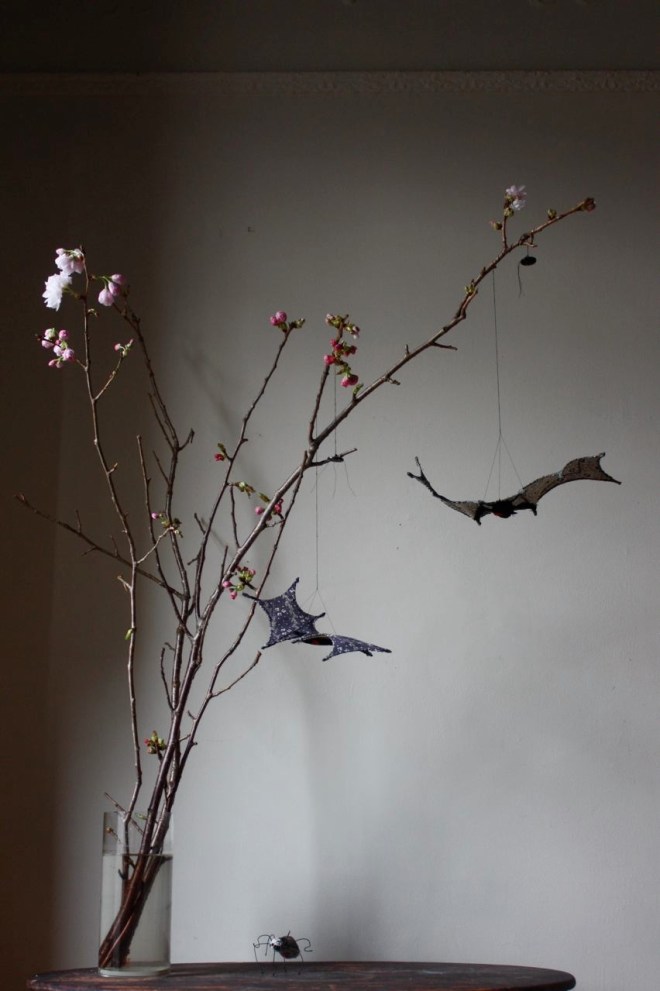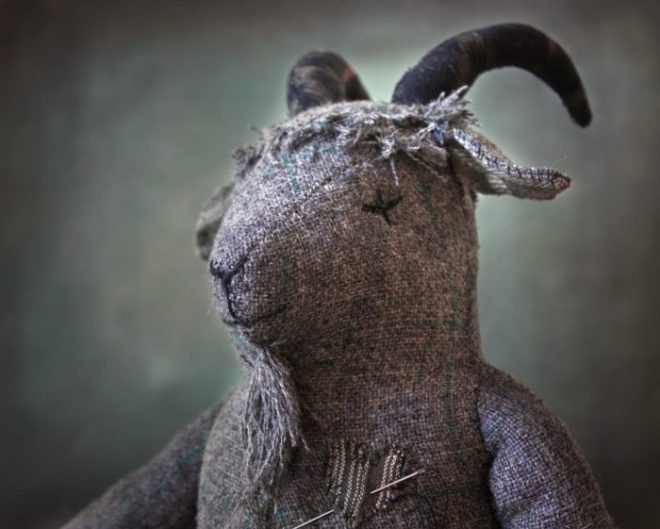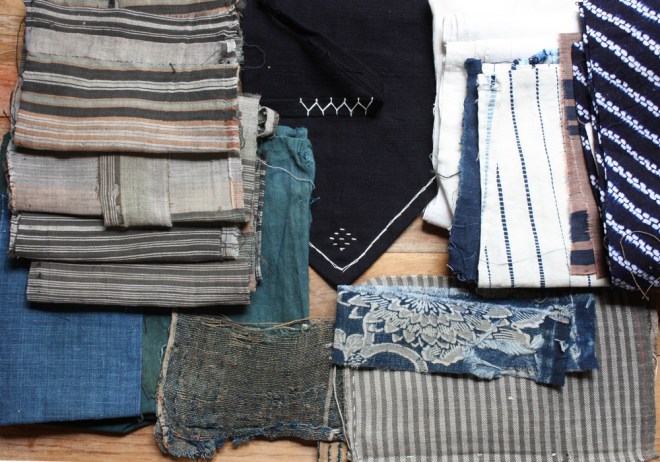
You have probably seen these guys, they show up frequently at picnics (hence the name). They don’t come to pester, just to say hi. They’re friendly like that. Aggressively and relentlessly friendly. They don’t even get mad if you put them in a jar. Just take them to a picnic once in a while.

Good things come out of play. These guys turned up a couple years ago in a silly bug experiment. They crack me up. And they’re a perfect scrap project – you only need a little bit and a mismatched variety is nice. And they make a silly and sweet surprise for somebody little’s lunchbox.

make a picnic bug:
download the pattern
You will also need:
- fabric scraps – I used cotton and linen
- twine or yarn for legs
- stuffing
- large embroidery needle
- a chopstick
- a bamboo skewer
- basic sewing supplies
1. Cut out the body and eye pattern pieces – pin to doubled fabric with the right sides together and cut out. Pin the stomach pattern to a single piece of fabric and cut out. Note – the wings are double sided so you’ll need 4 pieces – 2 for each wing. I used 2 different fabrics. Pin the pattern to the 2 layers of fabric with the right sides together and cut out a wing, then flip the pattern and repeat for another wing.
2. Cut a slit in the stomach area of the body pattern for turning and stuffing – make sure it’s smaller than the stomach cover.
3. Mark your quarter inch seam allowance on the fabric (really – it helps a lot). Pin the two body pieces with the right sides together and sew all around the body. Pin two pairs of wings with the right sides together and sew – leave open as shown.
4. Clip little notches all around the body and wings being careful not to cut the seam. Clip the points off the wings too and clip along the curve.
5. Turn the body and wings right side out. Run the chopstick over the seam inside with firm pressure on the body and wings. this helps open the seam for a smooth shape. Press each piece.
6. Stuff the body – I’m using wool stuffing.
7. Stitch the stomach closed. this will not show. Don’t pull the stitches too tight – just enough to close. Stitch the wing openings closed too.
8. You can use you large needle to move the stuffing around and fine tune – this helps fill out the curves.
9. Pin the stomach and eyes in place and whip stitch around. Optional- whip stitch around the wings with a contrasting thread.
10. Stitch and elongated X for each eye and a little W between for a mouth. I also added a few horizontal stitches on his neck. For tips on hiding your knots see this post.



























































































